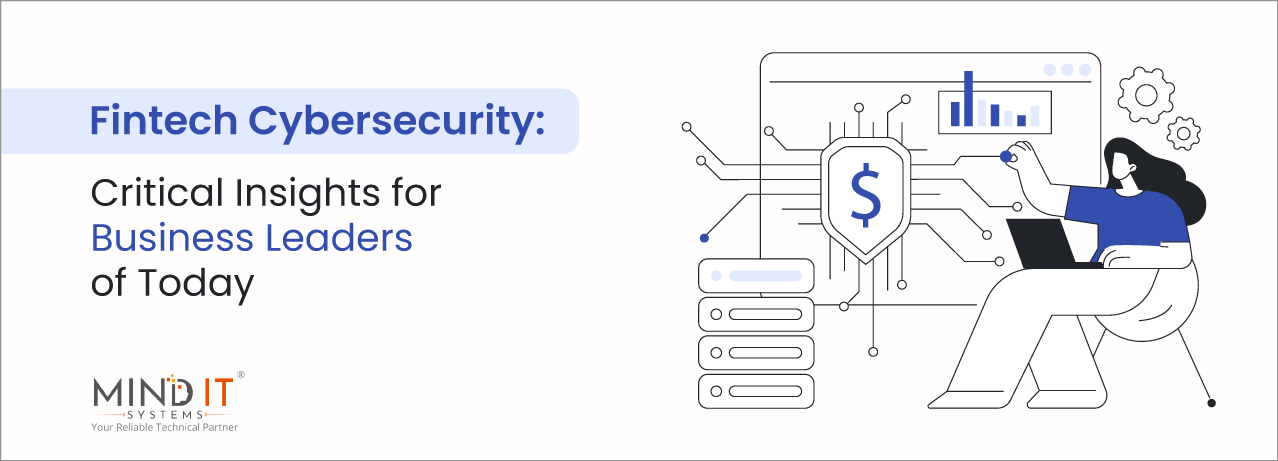
Introduction
As a fintech leader, you’re on a mission to innovate and scale your platform, but with every new feature, API integration, or cloud service, you’re increasing your exposure to potential cyber threats. According to recent statistics, over 3,450 financial services companies experienced data breaches in 2024, and 72% of these incidents stemmed from weak APIs or misconfigured cloud systems. This stark reality underscores one key message—security can’t be an afterthought. It must be baked into your platform from the very start.
In this comprehensive guide, we explore the major cybersecurity threats fintech companies are facing, share real-world examples of breaches, and outline the practical steps you can take to build a secure, scalable platform that fosters user trust and attracts investors.
What are the Common Causes of Fintech Cybersecurity Breaches?
While every fintech platform has unique risks, many breaches stem from similar vulnerabilities:
- Phishing and Social Engineering: Hackers often exploit human error. A Statista 2024 report noted that 36% of financial sector cyberattacks were caused by phishing.
- Weak APIs: APIs are crucial for fintech platforms, allowing for integration and data sharing. However, if APIs aren’t properly protected, they can become a gateway for cybercriminals. Proper authentication, rate-limiting, and input validation are critical to securing APIs.
- Cloud Misconfigurations: Fintechs often rely on cloud services for scalability and cost-efficiency. However, misconfigured cloud environments, such as open storage buckets or excessive permissions, can lead to vulnerabilities. Regular audits and clear cloud governance are essential.
- Over-Permissioned Accounts: Granting too many permissions to employees or third-party vendors increases the risk of a security breach. A “least privilege” approach to access control ensures that users only have access to the resources they absolutely need.
- Outdated Third-Party Tools: Many fintech platforms integrate third-party tools, such as payment processors or identity verification services. If these tools are not regularly updated or have known vulnerabilities, they can introduce risks into your platform.
A Few Major Cybersecurity Breaches in Fintech (2024)
The fintech industry witnessed several significant cybersecurity breaches in 2024. These incidents highlight the vulnerabilities that continue to challenge the sector. Below are some major breaches and the key lessons they offer for improving security:
1. Equifax (February 2024): Equifax, a U.S.-based credit reporting agency, was hacked again in February 2024 due to unpatched vulnerabilities in its web application. The breach exposed personal information affecting millions of individuals, including Social Security numbers, credit scores, and other financial data.
Key Takeaway: Regularly patch and update web applications, focus on vulnerability management, and conduct thorough penetration testing to identify potential weaknesses.
2. Capital One (March 2024): In March 2024, Capital One, a U.S.-based financial services company, experienced a data breach affecting over 100 million customers. Hackers exploited a misconfigured firewall on a bank’s web application server, leading to unauthorized access to personal and financial data, including credit scores, account numbers, and transaction histories.
Key Takeaway: Ensure robust firewall configurations, regularly audit cloud infrastructure, and apply best practices for web application security to prevent vulnerabilities.
3. T-Mobile (Nov 2024): In November 2024, T-Mobile USA’s mobile payment system, integrated with several fintech services, suffered a major breach. Attackers exploited vulnerabilities in the SMS-based authentication method, leading to the exposure of financial data belonging to more than 10 million users.
Key Takeaway: Move beyond SMS-based authentication, implement stronger multi-factor authentication (MFA) methods like app-based authenticators or biometrics to prevent unauthorized access.
Fintech Cybersecurity Threats for 2025
Looking ahead, here are five major cybersecurity threats that fintech companies should be prepared for in 2025:
- Ransomware: Cybercriminals increasingly target valuable financial data and transactions, locking up systems and demanding a ransom. Statista 2024 reports predict global ransomware damage costs will exceed $265 billion by 2031, growing at 30% year-over-year.
- Credential Stuffing: Attackers often use stolen credentials from previous breaches to attempt unauthorized access to fintech platforms. Regularly updating your authentication methods and detecting abnormal login attempts is essential to mitigate this threat.
- DDoS Attacks: Distributed Denial of Service (DDoS) attacks overwhelm your platform with excessive traffic, causing downtime and disruption. These attacks can harm customer satisfaction, so it’s vital to have a response plan in place.
- Phishing & Business Email Compromise (BEC): Phishing scams trick employees into revealing sensitive information or transferring funds. BEC attacks often target high-level executives. Continuous training and strong email security protocols are critical in protecting against these types of attacks.
- API Injection Attacks: API injection attacks can tamper with transactions or steal data. Proper input validation and constant monitoring of API interactions are key to preventing such attacks.
Why Fintechs Are Prime Targets for Cybercriminals?
Fintechs are attractive targets for cybercriminals for several reasons:
- Round-the-Clock Operations: Fintech platforms operate 24/7, providing more opportunities for attackers to exploit vulnerabilities.
- Rapid Development Cycles: Fintech startups may prioritize speed over security in the rush to innovate, leaving gaps in their security infrastructure.
- Valuable Data: Fintech platforms store highly valuable user and financial data, making them a prime target for cybercriminals looking to sell or exploit this information. Statista (2023) states that financial services, after healthcare, are the second-most targeted sector for cyberattacks globally.
- Heavy Reliance on Third-Party Tools: Many fintech platforms use third-party services, which can introduce risks if not adequately secured. Regular third-party risk assessments are essential for maintaining a secure ecosystem.
Is your platform ready to handle tomorrow’s threats? Secure it today and scale with confidence.
How to Strengthen Your Fintech Platform Security: Things to Count On
To effectively protect your fintech platform, dive deeper into these critical areas to build a platform that is not only secure but also scalable and compliant with industry standards.
Technology
- Implement zero-trust architecture
- Encrypt all sensitive data
- Protect APIs with robust authentication measures
- Regularly review API & cloud configurations for vulnerabilities
- Use tools like SIEM (Security Information and Event Management) for real-time threat detection
People and Processes
- Continuously train your team on security practices
- Conduct regular security breach simulations.
- Enforce strict access controls for sensitive data.
- Follow secure coding practices throughout development.
- Keep the team updated on the latest threats and cybersecurity protocols.
User Experience
- Prioritize security without sacrificing user experience.
- Offer secure login methods like two-factor authentication or biometrics.
- Maintain clear, transparent communication with users about any security issues.
- Implement Privacy by Design to embed data protection into the product development process.
- Ensure smooth access and ease of use while enforcing strong security protocols.
Governance & Compliance
- Frequently audit your platform’s adherence to relevant regulations.
- Ensure your platform follows top security governance practices.
- Achieve security certifications like ISO 27001 or SOC 2 to demonstrate a commitment to security.
- Ensure third-party vendors meet top-tier security standards to mitigate supply chain risks.
Build a Secure Future with Mind IT Systems
For fintech leaders, cybersecurity should not just be about mitigating risks—it’s about building a secure, scalable platform that positions your business for growth. Strong cybersecurity practices will help you earn customer trust, comply with regulations, and attract investors, setting you apart from competitors.
At Mind IT Systems, we understand the unique challenges that fintech companies face. Our expertise in building secure, scalable, and compliant platforms ensures that cybersecurity is woven into every aspect of your platform’s development. Whether you’re launching a new product or enhancing an existing one, we’re here to help safeguard your business and help you scale with confidence.
Together, let’s build a secure, trustworthy fintech future.
Cybersecurity isn’t just protection, it’s growth. Secure your future and watch your fintech thrive.
Share this post
About the Author

Sujoy Roy
(Head – Digital Marketing)
From my teenage time, I had a quench to solve problems and loved leadership. Starting my career in relation management, ignited my passion for managing people. While managing I realized technology needs to be incorporated to keep pace with the changing world & do my work efficiently.

